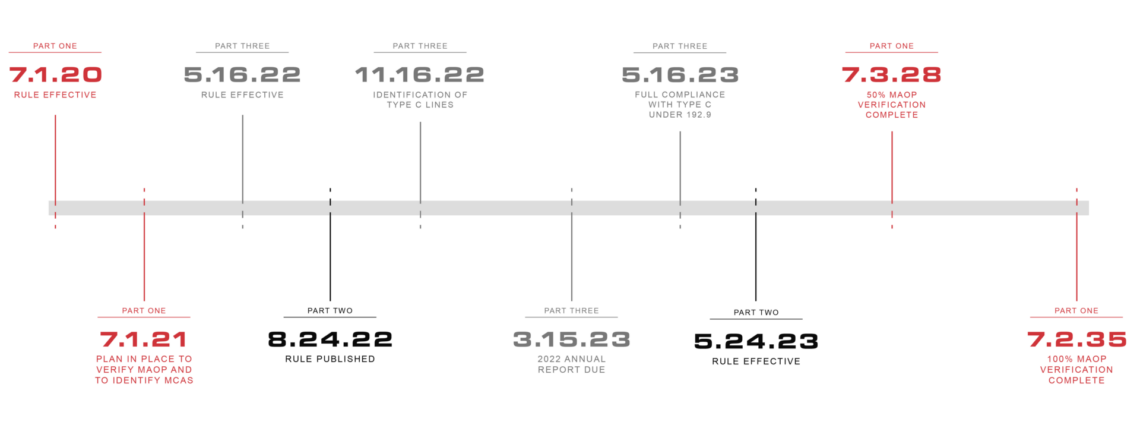PHMSA Mega Rule Explained and How Dairyland Can Help You
Introduction
The Pipeline and Hazardous Materials Safety Administration (PHMSA) published Part 2 of the Pipeline Mega Rules on August 24, 2022, with the new laws taking effect on May 24, 2023 (Reference Docket Number PHMSA-2011-0023). The following sections give some history behind the PIPES Act that generated the Mega Rule, and a high-level summary of the major portions of the latest rule installment, known as Part 2. Also included in this article is a summary of the new valve installation rules that went into effect earlier in 2022.
Rule updates such as these can be challenging as each operator applies them to their system. Dairyland wants to assure you that we are here to help you make decisions on how our solutions can be applied to meet these important safety updates. Our technical support staff is ready to support you in a variety of ways, and always offer free personal consultations to help customers decide how to apply Dairyland solutions to your system. This article aims to articulate ways we can help you with rugged and reliable products you have come to expect from us over the last 40 years.
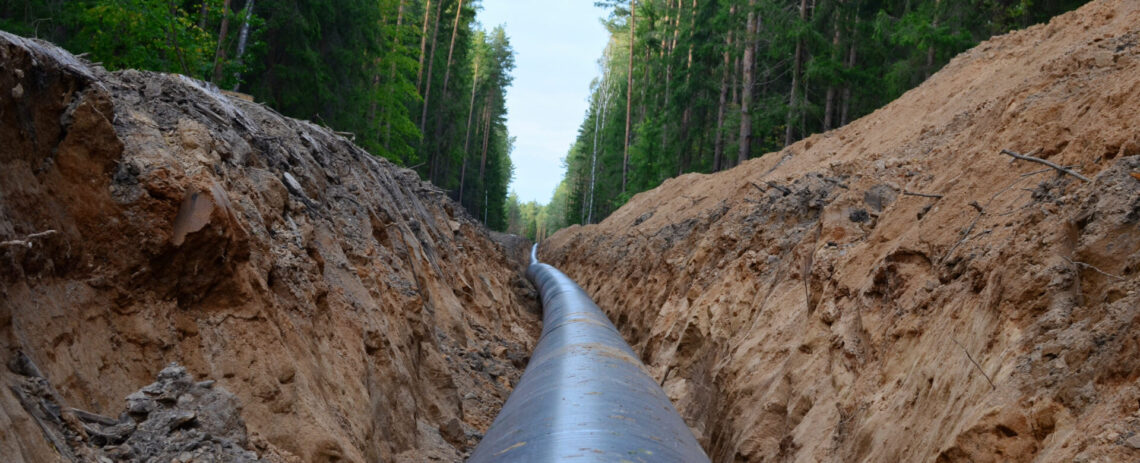
Pipeline Integrity History
The United States Pipeline and Hazardous Materials & Safety Administration has had a transmission pipeline integrity emphasis for over 20 years, with the first major installment of pipeline-focused rules known as the Pipeline Safety Improvement Act introduced in 2002. The Pipeline Safety Act focuses on Federal Codes Part 192 and Part 195, reinforcing a risk management approach to the safety of natural gas transmission pipelines, natural gas distribution pipelines, and hazardous liquid transmission pipelines. This first wave of code updates was promulgated by a catastrophic pipeline failure in Bellingham, Washington in June 1999.
After a series of other significant pipelines failures in the late 2000’s, most notably the San Bruno, CA pipeline incident in 2010, PHMSA published an Advanced Notice of Proposed Rule Making (ANPRM) in August 2011, which was signed into law as the Pipeline Safety Act in January 2012. Additionally, a Notice of Proposed Rule Making (NPRM) was published in April 2016, with rules collectively known as the Protecting our Infrastructure of Pipelines Enhancing Safety (PIPES) Act, and was signed into law in June of 2016. An additional PIPES Act was also signed into law in December of 2020. The outcomes of the PIPES Acts of 2016 and 2020 was a planned separation of the proposed updates into three separate Rules, also known as Mega Rules.
Mega Rule – Part 1 – Issued October 2019
The major focus of this rule was for the reconfirmation of a pipeline’s maximum allowable operating pressure (MAOP) of previously untested natural gas transmission pipelines and pipelines lacking certain material or operational records. In addition, it required periodic assessments of pipelines not in High Consequence Areas (HCA’s), as well as other related provisions.
Mega Rule – Part 3 – Issued November 2021
Additional rules were created to ensure the integrity of onshore gas gathering pipelines that have large diameters and high operating pressures. An estimated 425,000 miles of onshore gas gathering pipelines are now being reported on and managed through the integrity management of transmission pipelines.
Mega Rule – Part 2 – Issued August 2022
The final rule of the PIPES Act was published on August 24, 2022, with the bulk of the requirements taking effect on May 24, 2023. This culmination of the PIPES Act generated the following statement from PHMSA Deputy Administrator Tristan Brown “The 2010 PG&E incident in San Bruno was a tragedy that we must never forget. This rule will help prevent future incidents by ensuring operators identify and repair threats more quickly and comprehensively, improving safety and mitigating climate impacts.”
This major rule update took over six years to come to fruition after many discussions with a diverse group of stakeholders including federal and state commissions, pipeline operators, citizen groups, and industry trade groups. This most recent update under the Mega Rule is focused on onshore natural gas transmission pipelines and has the following main components:
Management of Change
PHMSA determined that the existing Management of Change (MOC) requirements and industry practices were not sufficient and made changes to align the requirements with that of the existing MOC standards in the ASME/ANSI B31.8S standard titled “Managing System Integrity of Gas Pipelines.” Specifically, as outlined in the standard section 11, the MOC process must address technical, design, physical, environmental, procedural, operational, maintenance, and organizational changes to the pipeline or processes, whether permanent or temporary.
Corrosion Control
Installation of Pipe in the Ditch and Coating Surveys
PHMSA has identified that construction practices, including the installation of pipe into the ditch, can result in damaged coating that can compromise corrosion control. The rule now requires that operators perform coating assessments to identify any damage promptly after pipe backfilling and to remediate any damage found. In addition, language has been added to require that pipe coatings have sufficient strength to resist damage during installation and backfill operations. The code specifies that any installation, repair, or replacement of natural gas pipelines greater than 1,000 feet in length will need a coating survey to be performed within six months after putting the pipeline into service. These surveys include both ACVG and DCVG, and any indications that are classified as severe, according to NACE SP0502, must be remediated appropriately.
Interference Surveys
Specific requirements to monitor and mitigate detrimental AC & DC interference currents have been added to subpart I of Part 192. Interference surveys are now required when periodic monitoring indicates an increase in stray current, or new stray current sources are introduced. Sources of stray current can include co-located pipelines, structures, or high voltage alternating current (HVAC) or DC power lines, including from additional generation, a voltage up-rating, additional lines, new or enlarged power substations, or new pipelines or other structures. Additionally, a remedial action plan is to be developed if the interference current is greater than or equal to 100 amps per meter squared. Identified remedial actions are to be completed within 15 months after completing the interference survey where the deficiency was identified and operators must apply for any necessary permits within six months of completing the interference survey. The rule gives allowance to complete remedial actions within six months of obtaining the necessary permits.
External Corrosion
The annual monitoring of pipeline cathodic protection (CP) levels will now include additional requirements related to specific actions and timing of remediation when deficiencies are noted. When a deficiency is identified, it is now a requirement for a close-interval-survey (CIS) to be completed when systemic causes are identified. The CIS needs to be completed both upstream and downstream of the “down” reading (i.e. not at or above required levels) and it needs to be completed with the current sources interrupted in order to obtain an accurate polarized potential of the pipeline. In addition, an interrupted CIS is to be completed after remedial actions are undertaken to ensure the pipeline potential readings are acceptable.
Remediation of any confirmed CP deficiencies are to be completed promptly, but no later than the earliest of the following: prior to the next required inspection or test interval; within one year, not to exceed 15 months of the inspection or test that identified the deficiency; or as soon as practicable, not to exceed six months, after obtaining any necessary permits.
Internal Corrosion
Onshore gas transmission operators that are known to transport gas with corrosive constituents are now required to evaluate the effectiveness their internal corrosion monitoring and mitigation systems at least once per calendar year, not to exceed 15 months. In addition, these same onshore gas transmission operators are to review their internal corrosion monitoring and mitigation program annually, not to exceed 15 months, and adjust as necessary to mitigate the harmful constituents.
Inspections Following Extreme Weather Events
Extreme weather has been a contributing factor in several pipeline failures, predominantly from floods, river scour, river channel migration, earth movement and hurricanes. The frequency and severe consequences of these events have raised the importance of inspecting potentially affected pipelines. PHMSA has amended the code to require operators to inspect potentially affected facilities within 72 hours after the event and when the area can be safely accessed. Adverse conditions must be remediated appropriately.
Repair Criteria for HCAs and non-HCAs
PHMSA has updated repair criteria to provide greater assurance that operators will repair anomalies and defects before they grow to a size that causes a leak or a rupture. Also, repair criteria are now consistent between HCA and non-HCA locations, with the latter providing longer timeframes for remediation of conditions that are not categorized as “immediate.” This allows operators to prioritize anomalous conditions in HCAs where consequences of a pipeline failure may be greater.
Valve Spacing Rule – Issued April 2022
This rule applies updated valve spacing requirements and minimum rupture detection standards based on NTSB recommendations to PHMSA after the 2010 pipeline incidents in San Bruno, CA and Marshall, MI. The rule applies to newly constructed and “entirely replaced” onshore gas transmission, Type A gas gathering and hazardous liquid pipelines with diameters of six inches or greater.
The rule made updates to both CFR 192 and 195, and can be summarized as follows:
- “Entirely Replaced” is a new definition for both gas and liquids pipelines where two or more miles of pipe, in aggregate, are replaced within any contiguous five-mile segment, within any 24-month period.
- “Rupture-Mitigation Valve” (RMV) is a new definition for an automatic shut-off valve (ASV) or a remote control valve (RCV) that a pipeline operator uses to minimize the volume of gas released from the pipeline and to mitigate the consequences of a rupture.
- The rule creates new minimum valve spacing and defines other locations where valve installation will be required (such as class location changes) and defines timelines for the installation of the RMV.
- The rule also addresses:
- Establishes Safety Performance Standards for the identification of ruptures, pipeline segment isolation, and other mitigative actions
- Responding to an identified rupture by closing RMVs no more than 30 minutes after rupture identification.
- Performing post-event reviews of any incidents/accidents or other failure events involving the closure of RMVs
- Performing maintenance on RMVs
- Remediation measures for repair or replacement of inoperable RMVs, including an RMV that cannot maintain shut-off
- Update emergency plans to reflect new 9-1-1 notification requirements for covered pipelines.
Ways for Dairyland to Help
Our values-driven culture and commitment to continual improvement means Dairyland is positioned to deliver the exceptional product quality and service that our customers around the world have come to expect. This allows us to offer a variety of solutions to help you meet the PHMSA Mega Rule requirements:
Accurate Close Interval Surveys
Conducting Close Interval Surveys (CIS) is a typical assessment method for most operators and has been in place for many years. An interrupted CIS aims to obtain a potential measurement taken with all cathodic protection (CP) current sources synchronously interrupted momentarily. The purpose of such a measurement is to evaluate the effectiveness of the CP system by determining the polarized potential of the pipeline (i.e. instant off potential). However, definitively proving that a cathodic protection system is providing the degree of corrosion protection required can often be a time-consuming and error prone endeavor. Accurate potential values in the field can be elusive, with several factors affecting these measurements. Dairyland Electrical Industries has provided pipeline decoupling products for almost forty years and has recently introduced a new decoupler called the PCRX which addresses one of the primary issues in most typical applications.
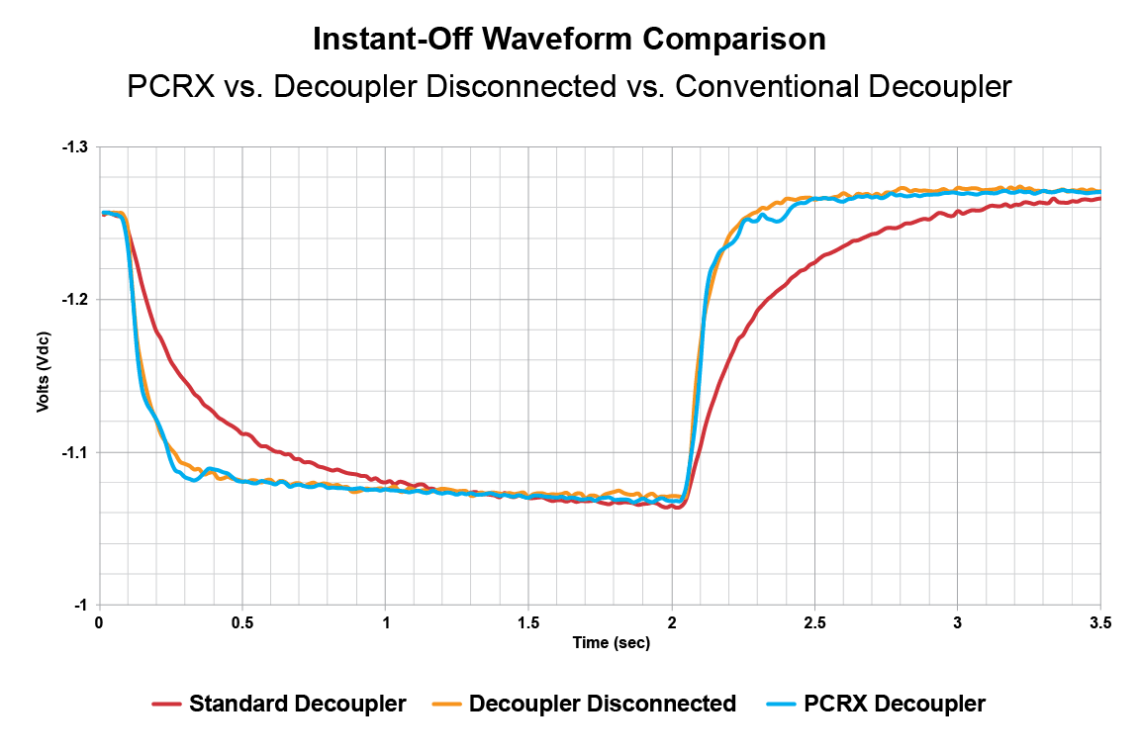
The PCRX provides typical decoupler functions with the additional benefit of electronically camouflaging itself from interrupted surveys, including close interval surveys (CIS), preventing the device from contributing to errors in potential readings. Field testing has shown that interrupted surveys can sometimes be impacted by combinations of factors such as pipeline coatings, soil resistivity, and the capacitance of traditional decouplers resulting in excessively electro-negative instant-off values. In most cases the PCRX completely solves this problem. The PCRX camouflages itself to overcome capacitive effects ensuring accurate and timely potential measurements. It does this without sacrificing the rugged over-voltage, AC mitigation, CP isolation, and safety grounding of Dairyland’s standard decoupling products.
LEARN MORE ABOUT THE PCRX
Interference Mitigation
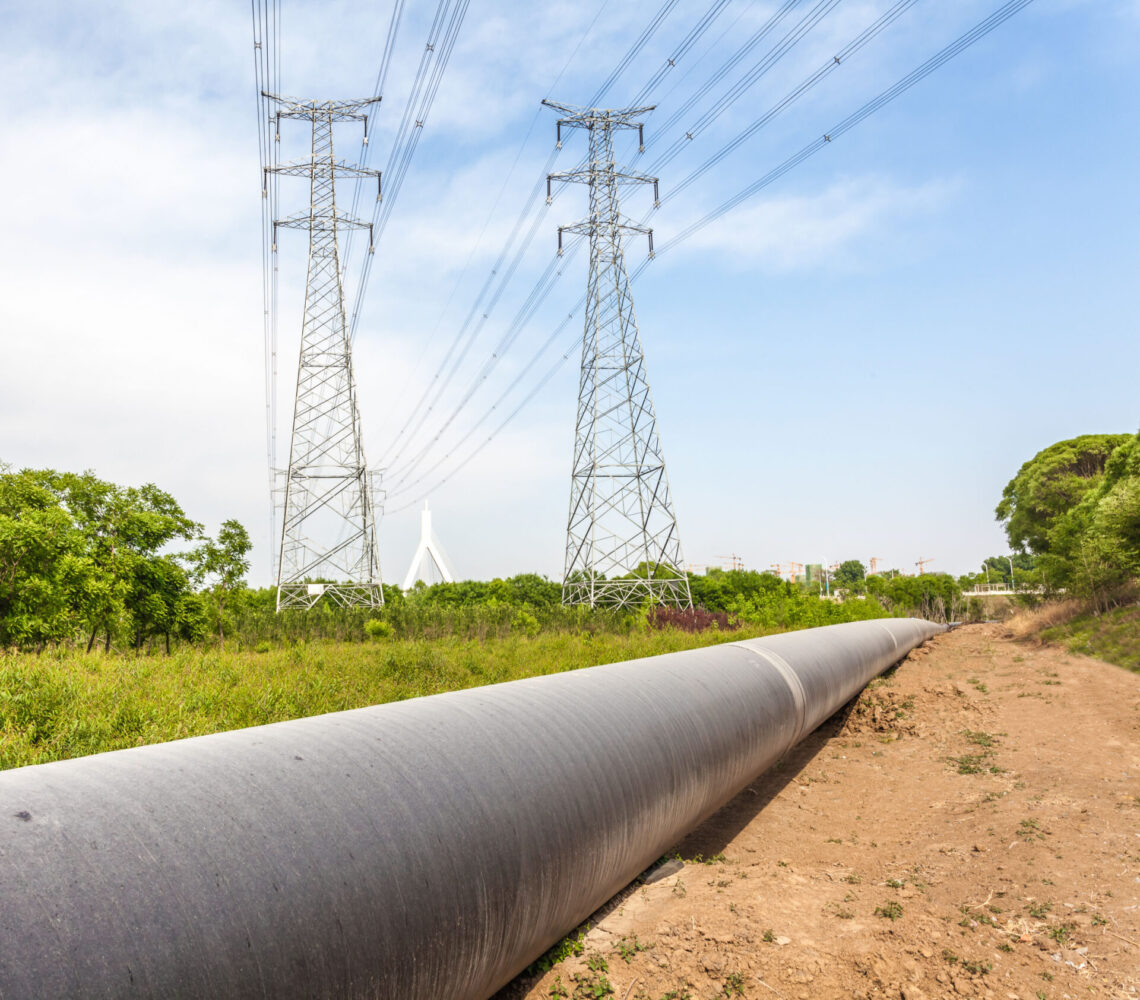 When a pipeline shares a right of way with high-voltage power lines, the electromagnetic field on the power lines can induce unwanted voltage onto the pipeline. This steady-state AC voltage is a safety hazard for personnel and can contribute to corrosion problems. In order to mitigate this voltage, an effective grounding path is required that will continue to isolate DC voltage for cathodic protection.Dairyland decouplers such as the SSD, PCR and PCRX, provide an effective grounding path that mitigates induced AC, while simultaneously maintaining DC isolation. This is possible due to the nature of a Dairyland decoupler which provides a low resistance to AC and high resistance to DC simultaneously. As a result, CP systems will continue to work efficiently, and the pipeline and personnel will be safe from unwanted AC interference.
When a pipeline shares a right of way with high-voltage power lines, the electromagnetic field on the power lines can induce unwanted voltage onto the pipeline. This steady-state AC voltage is a safety hazard for personnel and can contribute to corrosion problems. In order to mitigate this voltage, an effective grounding path is required that will continue to isolate DC voltage for cathodic protection.Dairyland decouplers such as the SSD, PCR and PCRX, provide an effective grounding path that mitigates induced AC, while simultaneously maintaining DC isolation. This is possible due to the nature of a Dairyland decoupler which provides a low resistance to AC and high resistance to DC simultaneously. As a result, CP systems will continue to work efficiently, and the pipeline and personnel will be safe from unwanted AC interference.
RMV Installation Best Practices
Dairyland has a long history of providing recommended best practices for maintaining electrical isolation of Rupture-Mitigation Valves (RMV) more commonly known as automatic shut-off valves (ASV) or remote-control valves (RCV). The Dairyland application that this applies to is known as “Decoupling Electrical Equipment.” The referenced application guide gives guidance on how to maintain effective grounding paths for safety, while also maintaining DC isolation so that your CP system can effectively protect against corrosion.
Product Availability
Dairyland recognizes the importance of timely remediation of issues found and the solutions that are required to keep the public, pipeline workers and pipelines safe. We are committed to providing accurate and timely product quotes and deliveries in order to keep pipelines safely operating. Our rugged products are built for extreme environments around the world and are built to last. Dairyland Electrical Industries is the world’s leading manufacturer of solid-state decoupling products used to isolate cathodically protected structures from grounding systems or other equipment, while simultaneously providing safety grounding for AC fault current and lightning.
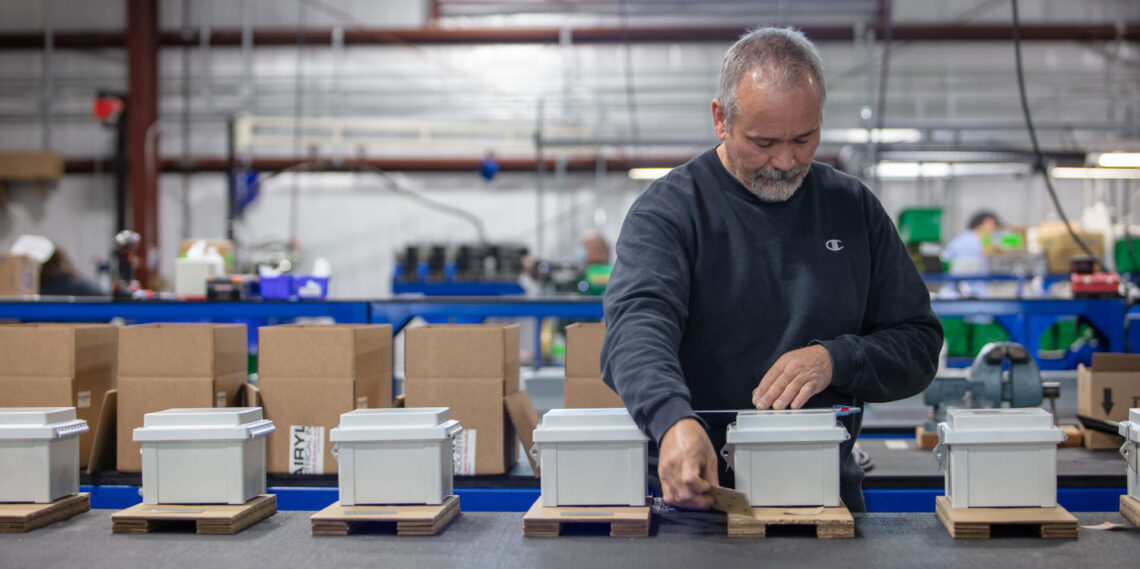
At Dairyland, it’s not just about selling great products. We pride ourselves on being a reliable resource for complete technical guidance on applications relating to isolation, grounding, over-voltage protection and related issues. We’ll make sure your questions are thoroughly researched, that you understand the answers, and that you know how to proceed…even if you don’t end up needing our products.
Feel free to reach out to us to ask questions or consult on your needs – we are here to help!
Want To Dive Deeper?
Join One of Our Learning Events.
Our event schedule provides you the in-depth product and application training you need to correctly apply Dairyland products.
